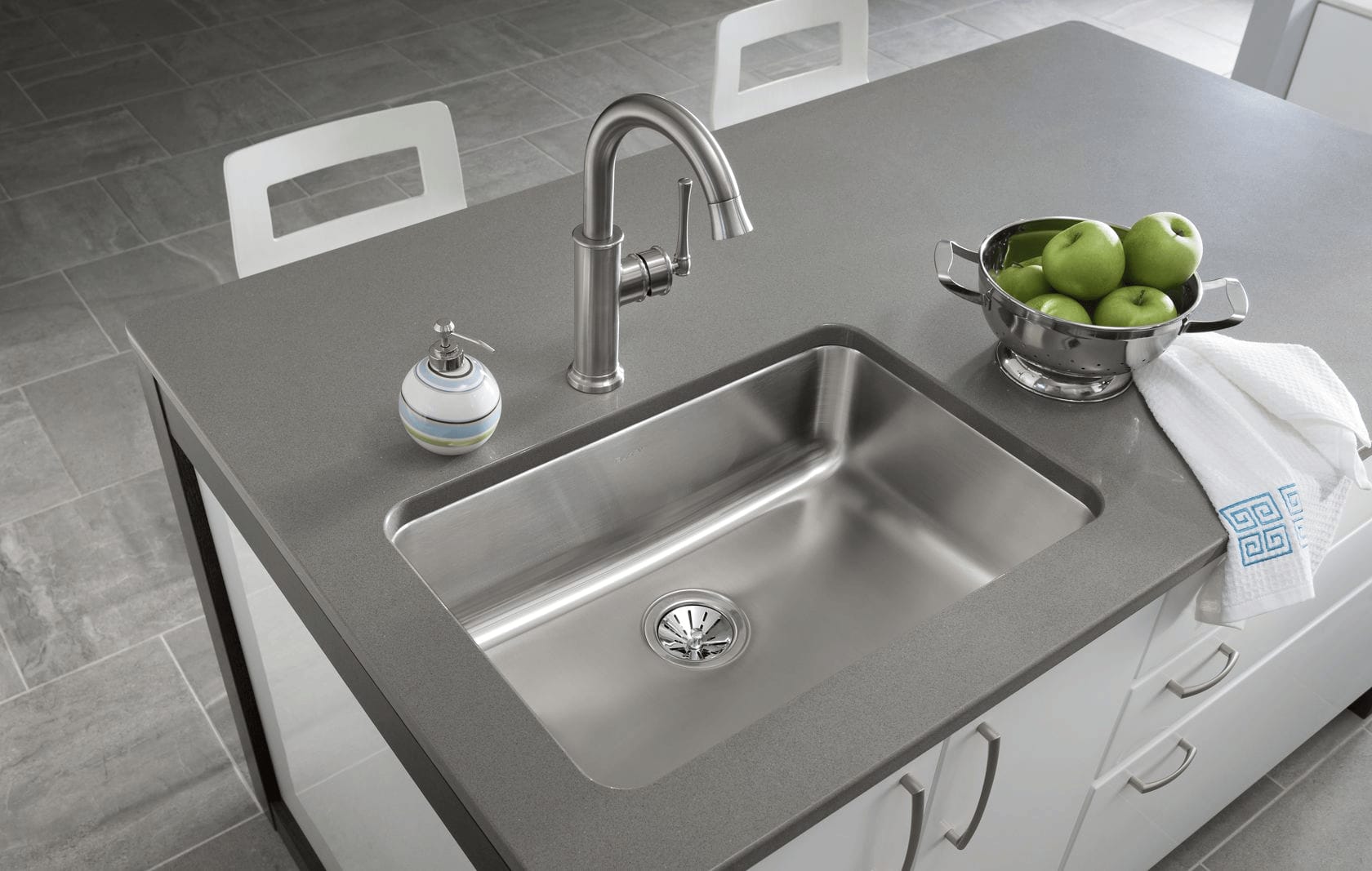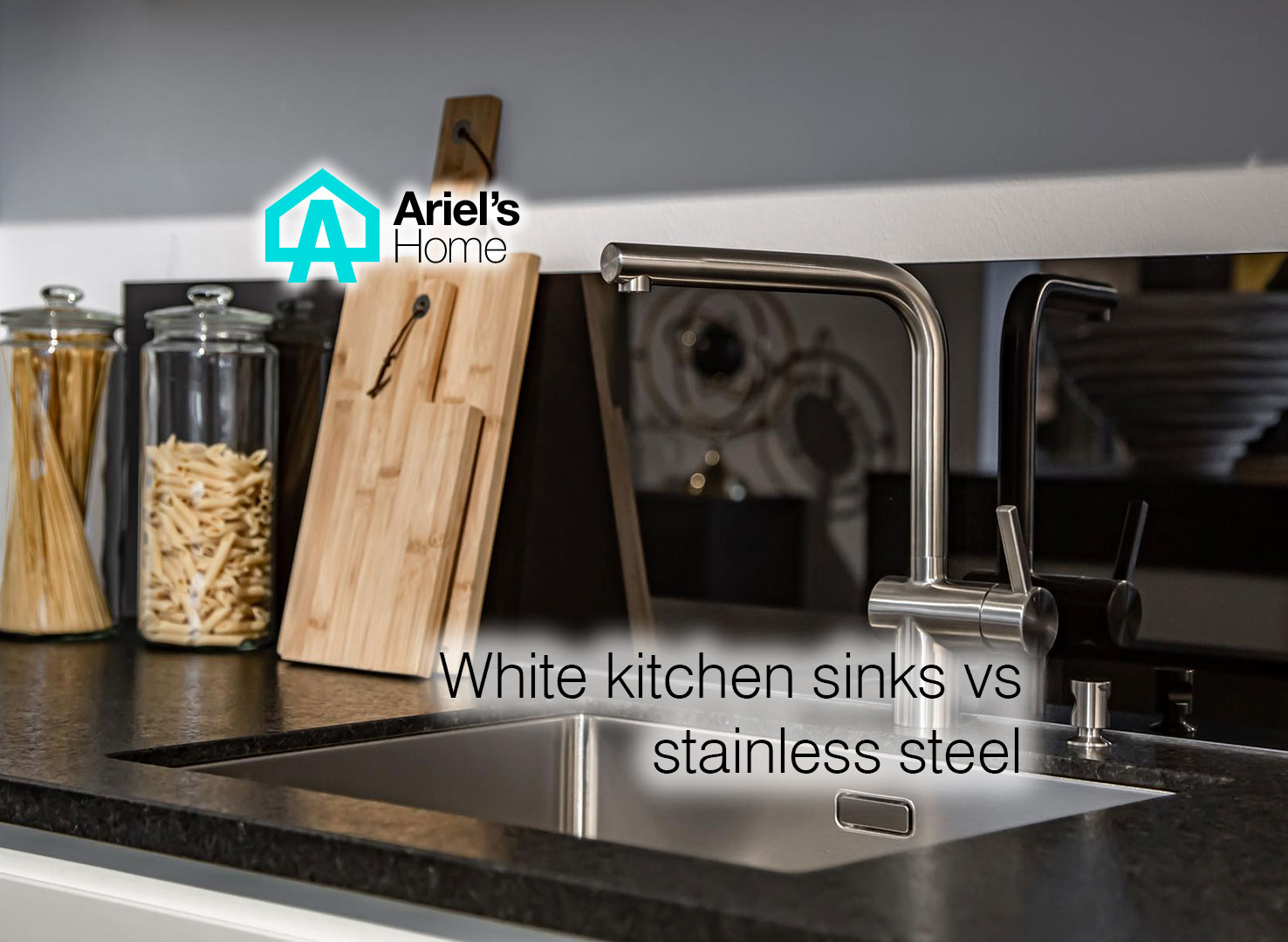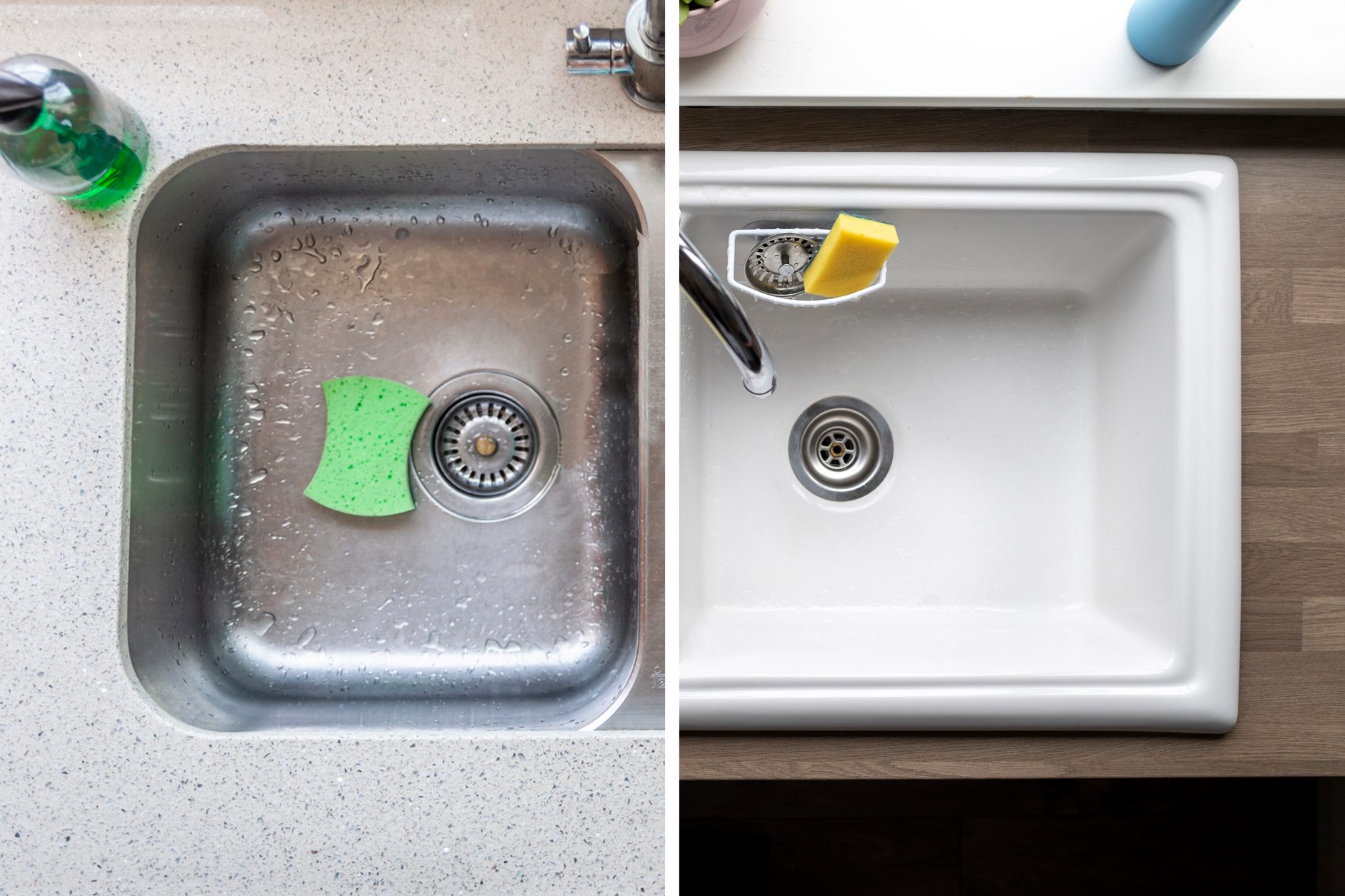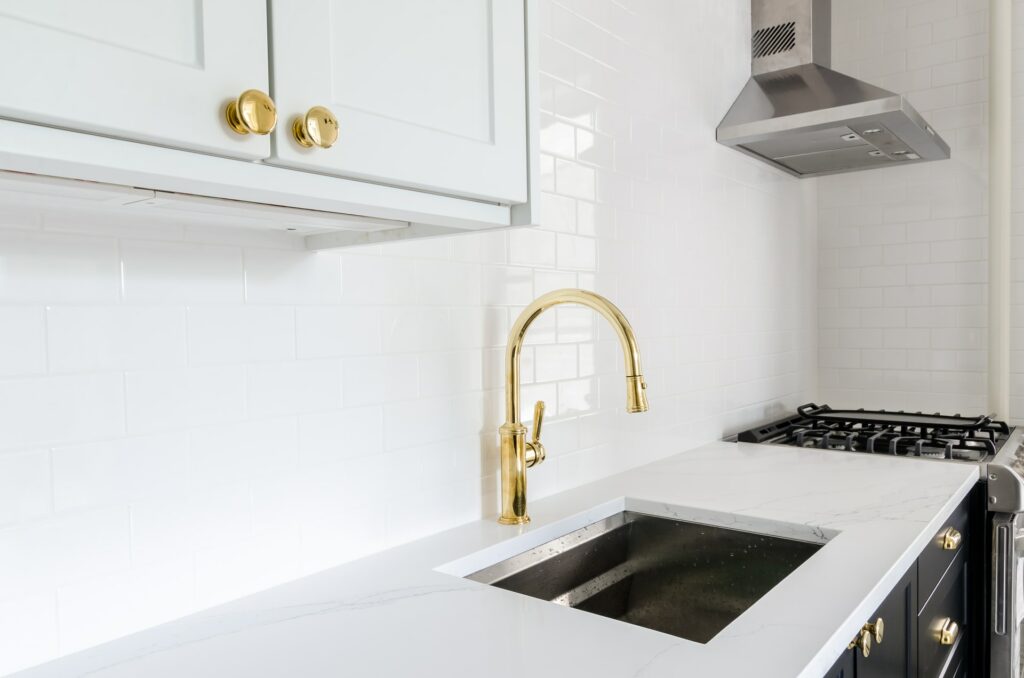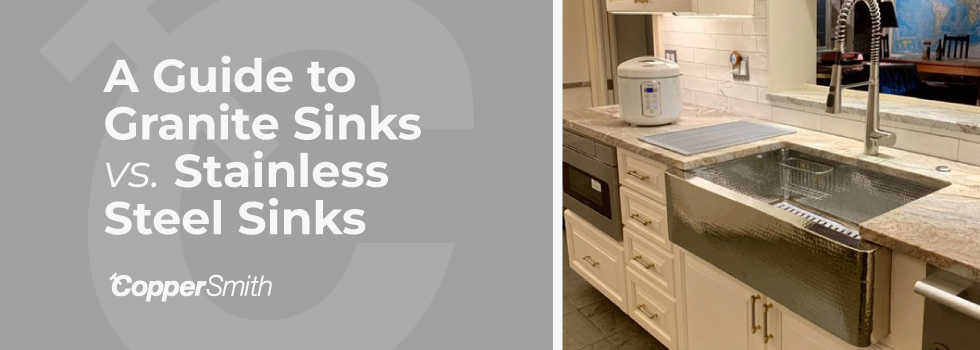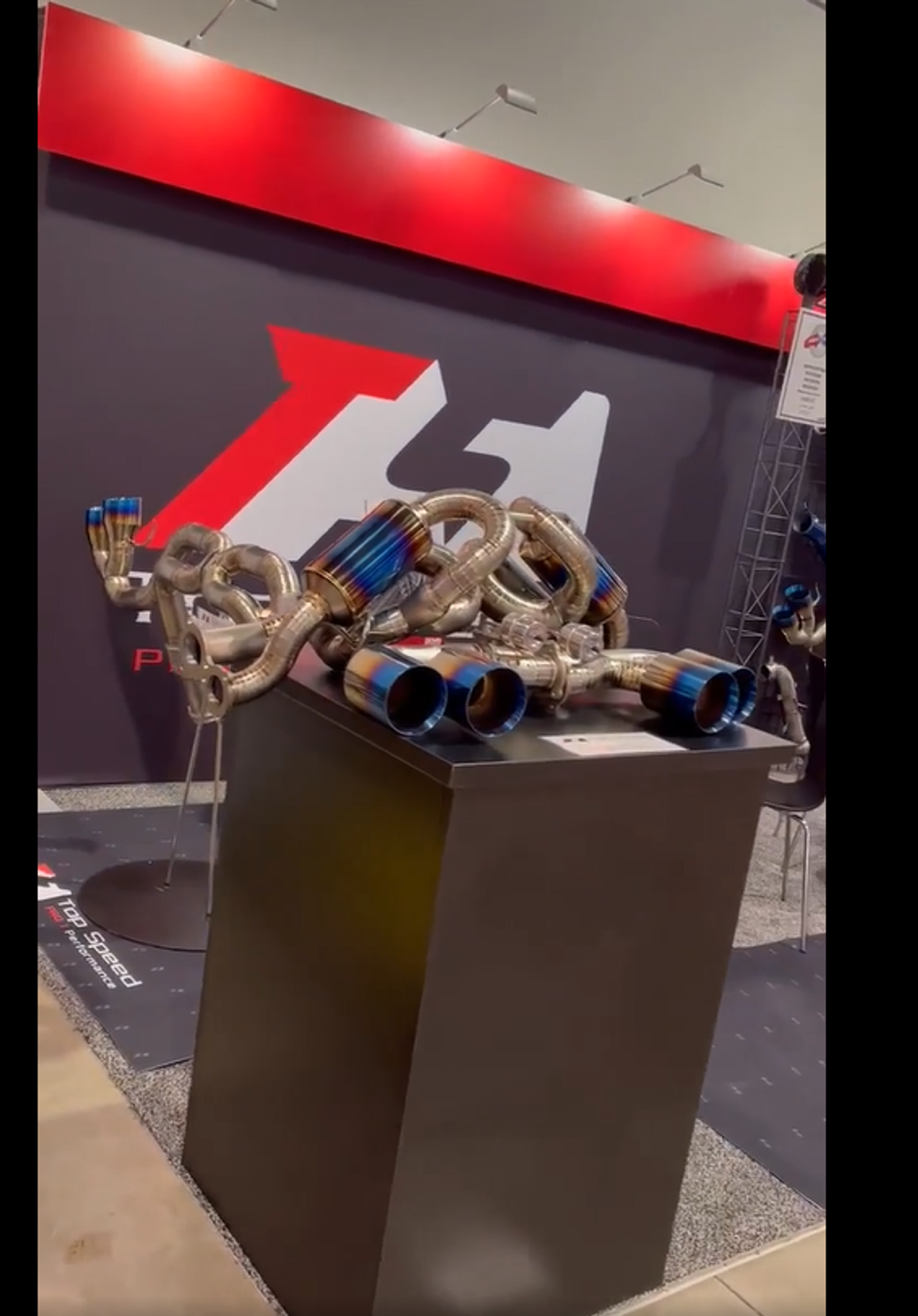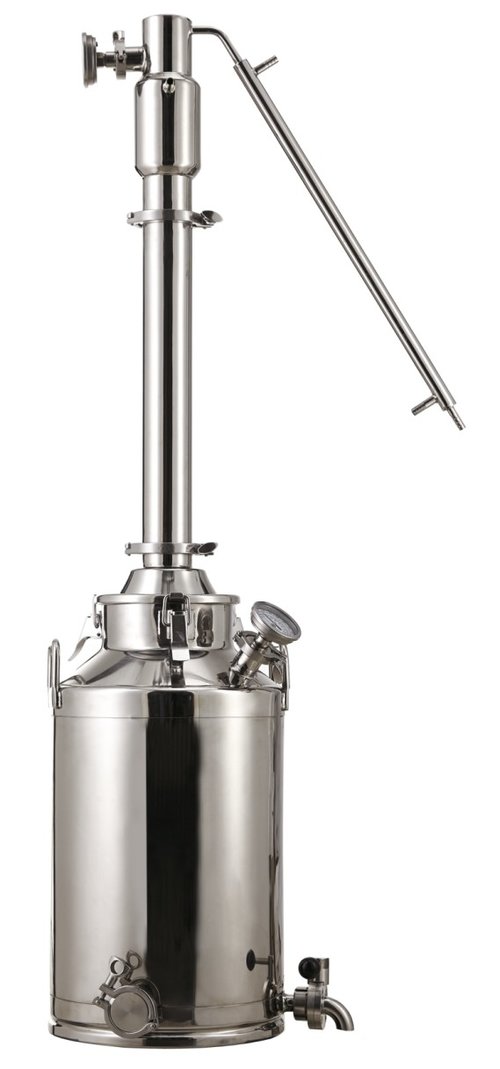When it comes to choosing a kitchen sink, durability is always a top consideration. After all, you want a sink that can withstand daily wear and tear without showing signs of damage. In this regard, ceramic kitchen sinks and stainless steel sinks have their own strengths and weaknesses. Ceramic kitchen sinks are known for their durability, as they are made from a combination of clay and other natural materials that are fired at high temperatures. This process creates a strong and sturdy sink that can last for many years. Ceramic sinks are also resistant to chipping and scratching, making them a popular choice for busy kitchens. Stainless steel sinks, on the other hand, are also highly durable. They are made from a combination of chromium and nickel, which creates a strong and corrosion-resistant material. However, stainless steel sinks can be prone to scratches and dents, which can affect their overall durability. Overall, both ceramic and stainless steel sinks are durable options for your kitchen. However, if you want a sink that can withstand heavy use and potential damage, ceramic sinks may be the better choice.1. Durability of Ceramic Kitchen Sinks vs Stainless Steel
The maintenance and cleaning requirements of a kitchen sink are important factors to consider, as you want a sink that is easy to maintain and keep clean. Let's take a look at how ceramic and stainless steel sinks compare in this aspect. Ceramic kitchen sinks are relatively low maintenance, as they are non-porous and resistant to stains. This means that you won't have to worry about food or liquid seeping into the sink and causing stains or odors. However, the downside of ceramic sinks is that they can be more prone to scratches and can chip if heavy or sharp objects are dropped in them. On the other hand, stainless steel sinks are known for their low maintenance and easy cleaning. The smooth surface of stainless steel makes it easy to wipe down and keep clean. However, stainless steel can be prone to water spots and can show scratches and smudges more easily. In terms of maintenance and cleaning, both types of sinks have their own pros and cons. It ultimately comes down to your personal preference and the level of maintenance you are willing to undertake.2. Maintenance and Cleaning Comparison: Ceramic Kitchen Sinks vs Stainless Steel
Cost is often a major deciding factor when it comes to home renovations, including kitchen sink upgrades. So, how do ceramic and stainless steel sinks compare in terms of cost? Ceramic kitchen sinks tend to be more expensive than stainless steel sinks. This is mainly due to the materials used and the manufacturing process. However, it's important to note that ceramic sinks are known for their durability and longevity, which can make them a worthwhile investment in the long run. Stainless steel sinks, on the other hand, are generally more budget-friendly. They are mass-produced, making them more affordable compared to ceramic sinks. However, keep in mind that the quality and thickness of the stainless steel can also affect the price. In the end, the cost of your sink will depend on your budget and the features that are most important to you.3. Cost Comparison: Ceramic Kitchen Sinks vs Stainless Steel
When it comes to design and style, both ceramic and stainless steel sinks offer a variety of options to choose from. Ceramic sinks are known for their classic and elegant look, with a smooth and glossy finish. They come in a variety of colors and shapes, allowing you to find the perfect sink to complement your kitchen design. However, keep in mind that the color and finish of ceramic sinks can fade over time. Stainless steel sinks, on the other hand, have a more modern and sleek appearance. They are available in different finishes, including brushed, polished, and satin, to match your kitchen's aesthetic. However, they may not have as many color options as ceramic sinks. Ultimately, the design and style of your sink will depend on your personal preference and the overall look of your kitchen.4. Design and Style Options: Ceramic Kitchen Sinks vs Stainless Steel
Another important factor to consider is the sink's heat resistance, as kitchen sinks are constantly exposed to hot water and hot pots and pans. In this regard, ceramic sinks and stainless steel sinks have their own strengths and weaknesses. Ceramic sinks are known for their excellent heat resistance, making them a popular choice for busy kitchens. They can withstand high temperatures without showing signs of damage or discoloration. However, it's important to note that sudden changes in temperature can cause ceramic sinks to crack or chip. Stainless steel sinks, on the other hand, are not as heat-resistant as ceramic sinks. They can withstand high temperatures, but leaving hot pots and pans on the sink's surface for a prolonged period can cause discoloration or damage. However, stainless steel sinks are less prone to cracks or chips due to sudden temperature changes. If you frequently use hot pots and pans in your kitchen, a ceramic sink may be the better option for you.5. Heat Resistance: Ceramic Kitchen Sinks vs Stainless Steel
Stains and scratches are common concerns when it comes to kitchen sinks. So, which type of sink is more resistant to these types of damage? Ceramic sinks are known for their resistance to stains, as they have a non-porous surface that prevents food and liquids from seeping in and causing discoloration. However, they can be more prone to scratches, especially if sharp or heavy objects are dropped in them. Stainless steel sinks, on the other hand, are more resistant to scratches due to their sturdy material. However, they can be prone to water spots and other stains, especially if they are not properly cleaned and maintained. Overall, both types of sinks have their own strengths and weaknesses when it comes to stain and scratch resistance. It's important to consider your lifestyle and habits when choosing the right sink for your kitchen.6. Stain and Scratch Resistance: Ceramic Kitchen Sinks vs Stainless Steel
Noise levels may not be the first thing that comes to mind when choosing a kitchen sink, but it's definitely something to consider, especially if you have an open-concept kitchen or if you want a quieter sink. Ceramic sinks are known for their quiet operation, as the material absorbs sound well. This can be a major advantage if you have a busy household or if you prefer a quieter kitchen. However, keep in mind that the sound of running water can be amplified in a ceramic sink. Stainless steel sinks, on the other hand, can be noisier due to the material's hardness. However, newer models often come with soundproofing features to reduce noise levels. Additionally, the sound of running water is less amplified in stainless steel sinks. If noise levels are a concern for you, consider opting for a ceramic sink or a soundproofed stainless steel sink.7. Noise Levels: Ceramic Kitchen Sinks vs Stainless Steel
The installation process of a kitchen sink can vary depending on the type of sink you choose. In this regard, ceramic and stainless steel sinks can have different installation requirements. Ceramic sinks are typically under-mounted, meaning they are installed beneath the countertop for a seamless look. This type of installation can be more time-consuming and may require professional help, as the sink needs to be properly supported to prevent cracking. Stainless steel sinks, on the other hand, can be top-mounted or under-mounted. Top-mounted sinks are easier to install and can be done by homeowners themselves. Under-mounted stainless steel sinks may require professional installation, as they need to be properly supported to prevent damage to the countertop. In terms of installation, stainless steel sinks may be the more convenient option for homeowners who prefer DIY projects.8. Installation Process: Ceramic Kitchen Sinks vs Stainless Steel
Caring for the environment is becoming increasingly important for many people, and this can also extend to home renovations. So, which type of sink has a lower environmental impact? Ceramic sinks are made from natural materials, making them more eco-friendly compared to stainless steel sinks. However, the manufacturing process of ceramic sinks can be energy-intensive, which can have a negative impact on the environment. Stainless steel sinks, on the other hand, are made from recycled materials and can also be recycled at the end of their lifespan. They also require less energy to manufacture, making them a more environmentally friendly option. If environmental impact is a top priority for you, stainless steel sinks may be the better choice.9. Environmental Impact: Ceramic Kitchen Sinks vs Stainless Steel
Finally, let's take a look at the longevity of ceramic and stainless steel sinks. After all, you want a sink that can last for many years without needing frequent replacements or repairs. Ceramic sinks are known for their durability and can last for many years with proper care. However, they can be prone to cracking or chipping, especially if heavy or sharp objects are dropped in them. Additionally, the color and finish of ceramic sinks may fade over time, affecting their overall appearance. Stainless steel sinks, on the other hand, are also durable and can last for many years. They are less prone to damage and discoloration, making them a low-maintenance option. However, if the sink is not properly cared for, it may develop rust or corrosion over time. Both types of sinks have a long lifespan, but it ultimately depends on how well they are maintained and used. After considering all these factors, it's clear that both ceramic and stainless steel sinks have their own unique strengths and weaknesses. Whether you choose a ceramic or stainless steel sink for your kitchen, make sure to prioritize your needs and preferences to find the perfect fit for your home. With proper care and maintenance, your chosen sink can serve as a functional and stylish addition to your kitchen for many years to come.10. Longevity Comparison: Ceramic Kitchen Sinks vs Stainless Steel
The Battle of Materials: Ceramic Kitchen Sink vs Stainless Steel

Ceramic Kitchen Sink
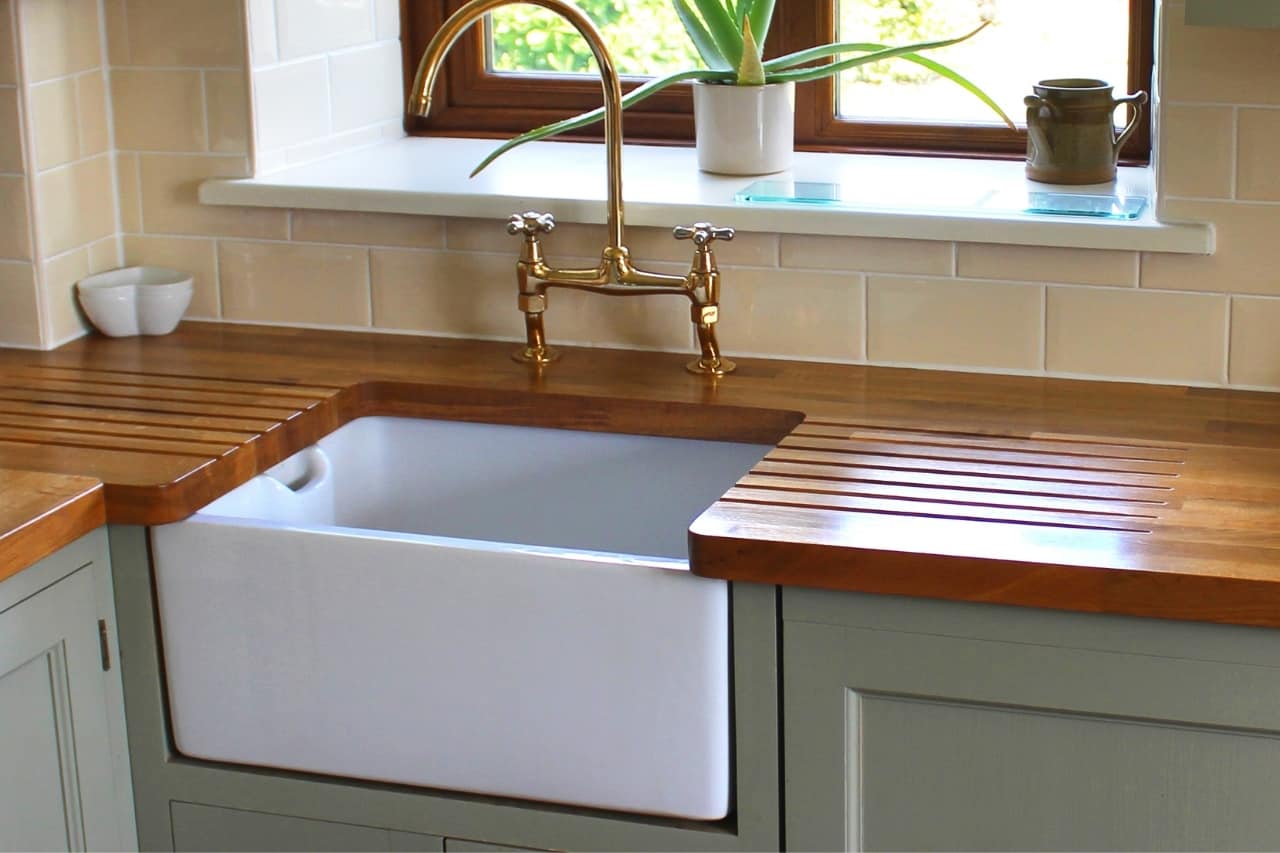 Ceramic kitchen sinks have been a popular choice for homeowners for many years, and for good reason. They offer a classic, timeless look that can fit seamlessly into any kitchen design. The material is made from a combination of clay, minerals, and water, which is then heated at high temperatures to create a strong and durable material. Ceramic sinks are typically glazed, giving them a smooth, easy-to-clean surface. They are also resistant to stains, scratches, and heat, making them a practical choice for busy kitchens.
One of the main advantages of ceramic kitchen sinks is their versatility in design
. They come in a variety of shapes, sizes, and colors, making it easy to find one that fits your specific kitchen needs and aesthetic preferences.
They also offer a more traditional and elegant look compared to stainless steel sinks
, which can complement a wide range of kitchen styles, from farmhouse to modern.
However, one of the downsides of ceramic sinks is their
potential for chipping or cracking
. While they are generally durable, they are not immune to heavy impacts or sharp objects falling into them.
They also require a bit more maintenance compared to stainless steel sinks
, as the glaze can wear off over time and may need to be reapplied. Additionally, some cleaning products may be too harsh for the delicate surface of a ceramic sink, which could lead to discoloration or damage.
Ceramic kitchen sinks have been a popular choice for homeowners for many years, and for good reason. They offer a classic, timeless look that can fit seamlessly into any kitchen design. The material is made from a combination of clay, minerals, and water, which is then heated at high temperatures to create a strong and durable material. Ceramic sinks are typically glazed, giving them a smooth, easy-to-clean surface. They are also resistant to stains, scratches, and heat, making them a practical choice for busy kitchens.
One of the main advantages of ceramic kitchen sinks is their versatility in design
. They come in a variety of shapes, sizes, and colors, making it easy to find one that fits your specific kitchen needs and aesthetic preferences.
They also offer a more traditional and elegant look compared to stainless steel sinks
, which can complement a wide range of kitchen styles, from farmhouse to modern.
However, one of the downsides of ceramic sinks is their
potential for chipping or cracking
. While they are generally durable, they are not immune to heavy impacts or sharp objects falling into them.
They also require a bit more maintenance compared to stainless steel sinks
, as the glaze can wear off over time and may need to be reapplied. Additionally, some cleaning products may be too harsh for the delicate surface of a ceramic sink, which could lead to discoloration or damage.
Stainless Steel Sinks
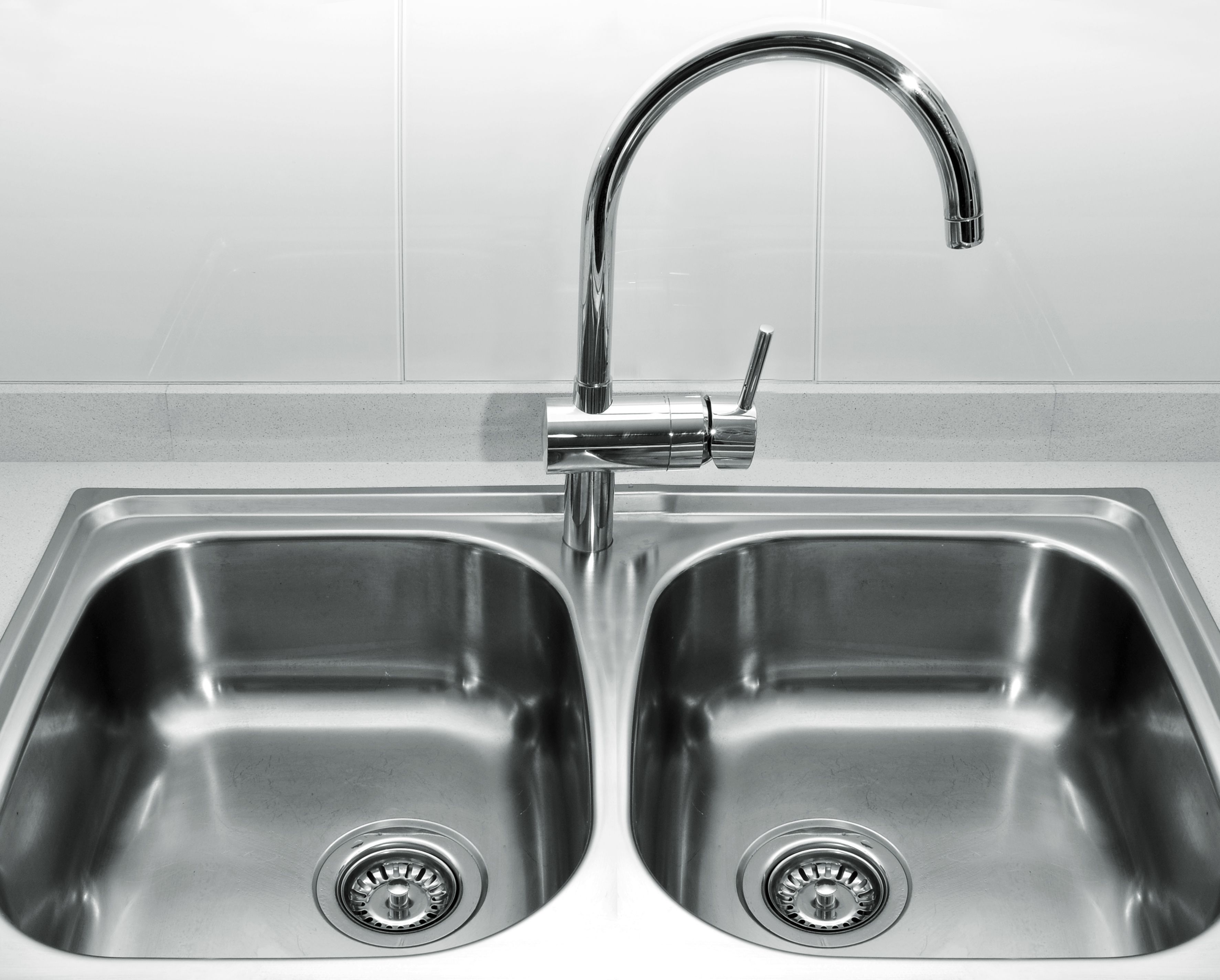 Stainless steel sinks have become increasingly popular in modern kitchen designs due to their sleek and contemporary look. The material is made from a combination of steel, chromium, and nickel, which gives it a shiny and reflective finish.
One of the main advantages of stainless steel sinks is their durability and resistance to wear and tear
. They are less likely to chip or crack compared to ceramic sinks and can withstand heavy impacts without denting or scratching.
Stainless steel sinks are also highly practical and easy to maintain
. They are non-porous, making them resistant to stains, bacteria, and odors. They are also heat-resistant, so you can place hot pots and pans directly into the sink without worrying about damaging the surface.
They are also low maintenance, as they can be easily cleaned with just soap and water
, and they do not require any special cleaning products.
One downside of stainless steel sinks is their
limited design options
. While they come in a variety of shapes and sizes, they are only available in one color – silver. This may not fit into every kitchen design, and some homeowners may prefer a more unique and customizable option.
They also tend to be noisier compared to ceramic sinks, as the metal can produce a louder sound when water or dishes are dropped into it
.
Stainless steel sinks have become increasingly popular in modern kitchen designs due to their sleek and contemporary look. The material is made from a combination of steel, chromium, and nickel, which gives it a shiny and reflective finish.
One of the main advantages of stainless steel sinks is their durability and resistance to wear and tear
. They are less likely to chip or crack compared to ceramic sinks and can withstand heavy impacts without denting or scratching.
Stainless steel sinks are also highly practical and easy to maintain
. They are non-porous, making them resistant to stains, bacteria, and odors. They are also heat-resistant, so you can place hot pots and pans directly into the sink without worrying about damaging the surface.
They are also low maintenance, as they can be easily cleaned with just soap and water
, and they do not require any special cleaning products.
One downside of stainless steel sinks is their
limited design options
. While they come in a variety of shapes and sizes, they are only available in one color – silver. This may not fit into every kitchen design, and some homeowners may prefer a more unique and customizable option.
They also tend to be noisier compared to ceramic sinks, as the metal can produce a louder sound when water or dishes are dropped into it
.
Which One Should You Choose?
 The decision between a ceramic kitchen sink and a stainless steel sink ultimately depends on your personal preferences and needs
. If you are looking for a classic and elegant look, ceramic may be the way to go. However, if you prioritize durability and practicality, stainless steel would be a better choice.
In the end, both materials have their own set of advantages and disadvantages, so it's important to weigh them carefully and choose the one that best fits your lifestyle and design aesthetic
.
In conclusion, whether you choose a ceramic kitchen sink or a stainless steel sink, both are excellent options for your kitchen.
Make sure to consider your budget, design preferences, and maintenance requirements before making a decision
. With proper care, both materials can last for many years and add a touch of style to your kitchen.
The decision between a ceramic kitchen sink and a stainless steel sink ultimately depends on your personal preferences and needs
. If you are looking for a classic and elegant look, ceramic may be the way to go. However, if you prioritize durability and practicality, stainless steel would be a better choice.
In the end, both materials have their own set of advantages and disadvantages, so it's important to weigh them carefully and choose the one that best fits your lifestyle and design aesthetic
.
In conclusion, whether you choose a ceramic kitchen sink or a stainless steel sink, both are excellent options for your kitchen.
Make sure to consider your budget, design preferences, and maintenance requirements before making a decision
. With proper care, both materials can last for many years and add a touch of style to your kitchen.




